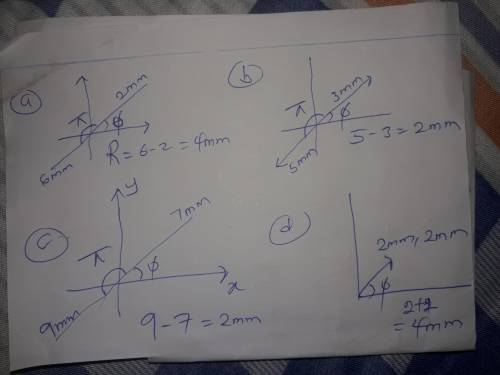
Physics, 19.06.2020 00:57 angeldaughter0620
The amplitudes and phase differences for four pairs of waves of equal wavelengths are (a) 2 mm, 6 mm, and π rad; (b) 3 mm, 5 mm, and π rad; (c) 7 mm, 9 mm, and π rad; (d) 2 mm, 2 mm, and 0 rad. Each pair travels in the same direction along the same string. Without written calculation, rank the four pairs according to the amplitude of their resultant wave, greatest first. (Hint: Construct phasor diagrams.)

Answers: 2


Other questions on the subject: Physics

Physics, 22.06.2019 12:30, madlenserlipepu1o
Hydrogen atoms are excited by a laser to the =4n=4 state and then allowed to emit. what is the maximum number of distinct emission spectral lines (lines of different wavelengths) that can be observed from this system? 8 6 2 7 4 5 1 3 calculate the wavelength of the 4⟶14⟶1 transition. =λ=
Answers: 2

Physics, 22.06.2019 19:30, sierranowe2003
Juliette sets the initial velocity to +10 m/s, the acceleration to zero, and clicks “start.” how can shakina describe the subsequent motion of the car juliette controls?
Answers: 3


Physics, 22.06.2019 23:30, isabel2417
Avector a⃗ has a length of 8.6 m and points in the negative x direction. find the x component of the vector −3.7a⃗ .
Answers: 1
You know the right answer?
The amplitudes and phase differences for four pairs of waves of equal wavelengths are (a) 2 mm, 6 mm...
Questions in other subjects:

Mathematics, 12.12.2019 16:31



Biology, 12.12.2019 16:31


Mathematics, 12.12.2019 16:31

Chemistry, 12.12.2019 16:31



Mathematics, 12.12.2019 16:31




